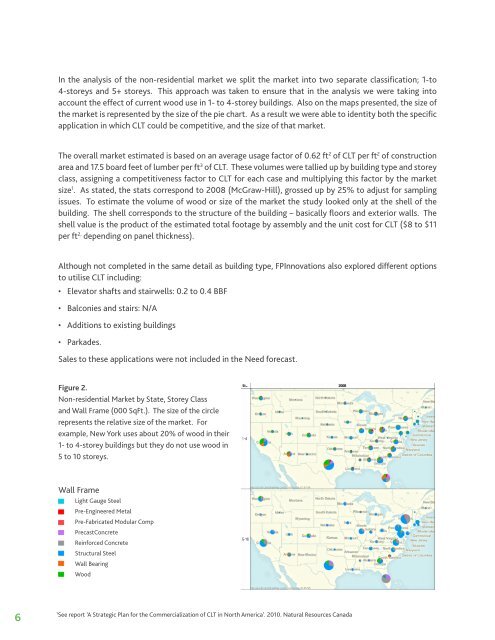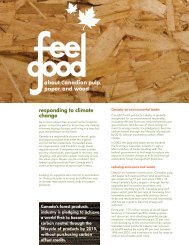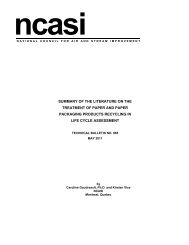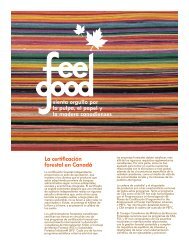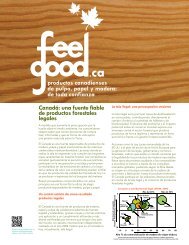The Value Proposition for Cross-Laminated Timber - Forest Products ...
The Value Proposition for Cross-Laminated Timber - Forest Products ...
The Value Proposition for Cross-Laminated Timber - Forest Products ...
Create successful ePaper yourself
Turn your PDF publications into a flip-book with our unique Google optimized e-Paper software.
In the analysis of the non-residential market we split the market into two separate classification; 1-to<br />
4-storeys and 5+ storeys. This approach was taken to ensure that in the analysis we were taking into<br />
account the effect of current wood use in 1- to 4-storey buildings. Also on the maps presented, the size of<br />
the market is represented by the size of the pie chart. As a result we were able to identity both the specific<br />
application in which CLT could be competitive, and the size of that market.<br />
<strong>The</strong> overall market estimated is based on an average usage factor of 0.62 ft 2 of CLT per ft 2 of construction<br />
area and 17.5 board feet of lumber per ft 3 of CLT. <strong>The</strong>se volumes were tallied up by building type and storey<br />
class, assigning a competitiveness factor to CLT <strong>for</strong> each case and multiplying this factor by the market<br />
size 1 . As stated, the stats correspond to 2008 (McGraw-Hill), grossed up by 25% to adjust <strong>for</strong> sampling<br />
issues. To estimate the volume of wood or size of the market the study looked only at the shell of the<br />
building. <strong>The</strong> shell corresponds to the structure of the building – basically floors and exterior walls. <strong>The</strong><br />
shell value is the product of the estimated total footage by assembly and the unit cost <strong>for</strong> CLT ($8 to $11<br />
per ft 2, depending on panel thickness).<br />
Although not completed in the same detail as building type, FPInnovations also explored different options<br />
to utilise CLT including:<br />
• Elevator shafts and stairwells: 0.2 to 0.4 BBF<br />
• Balconies and stairs: N/A<br />
• Additions to existing buildings<br />
• Parkades.<br />
Sales to these applications were not included in the Need <strong>for</strong>ecast.<br />
Figure 2.<br />
Non-residential Market by State, Storey Class<br />
and Wall Frame (000 SqFt.). <strong>The</strong> size of the circle<br />
represents the relative size of the market. For<br />
example, New York uses about 20% of wood in their<br />
1- to 4-storey buildings but they do not use wood in<br />
5 to 10 storeys.<br />
Wall Frame<br />
Light Gauge Steel<br />
Pre-Engineered Metal<br />
Pre-Fabricated Modular Comp<br />
PrecastConcrete<br />
Rein<strong>for</strong>ced Concrete<br />
Structural Steel<br />
Wall Bearing<br />
Wood<br />
6<br />
1<br />
See report ‘A Strategic Plan <strong>for</strong> the Commercialization of CLT in North America’. 2010. Natural Resources Canada


